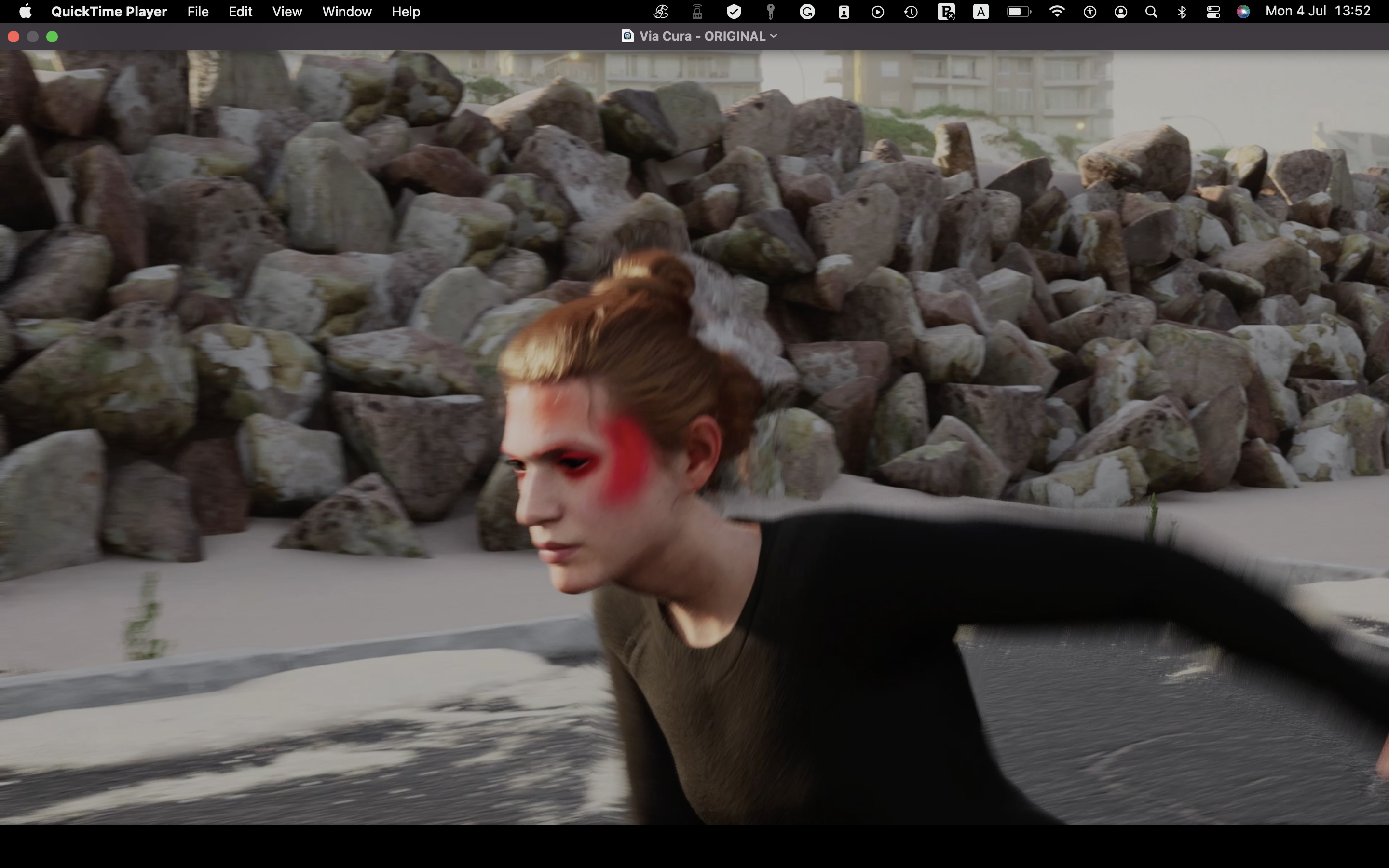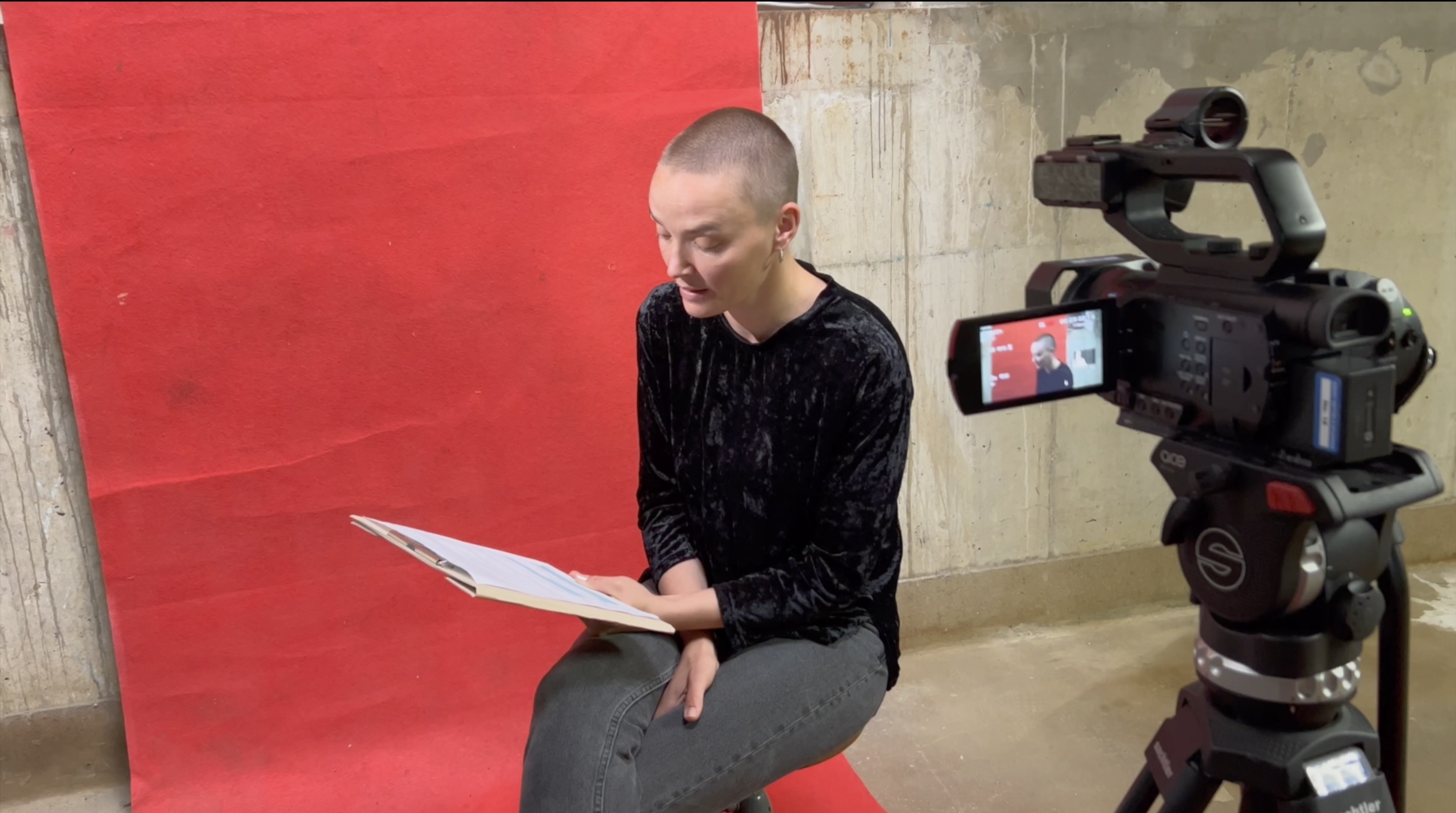VIA CURA
(a quasi film), cerca 10 minutes
video-installation
Via Cura is a deconstructed film, based on a script that I wrote to a friend battling cancer, and initially had no intention of ever being performed. The script was a gift, something I wrote to distract her, in an attempt to create her a new world, and give her agency, outside of the medical care facilities.
The plot is a critical fabulation exercise on the Myth of Cura, the Roman Goddess of Care (as unearthed by German philosopher Martin Heidegger, in Being and Time), and the quest for metaphysical healing (materialized in the personification of the myth and the search for the path towards Cura).
The Goddess of Cura (also known as Aera Cura) is attributed in early Roman mythology as the creator of humanity. The myth was first told by the first-century mythographer Hyginus, who narrated in his Fabulae compilation that humankind was created from clay by the personification of care (Cura). And yet, for centuries, the Myth of Cura became largely forgotten in Roman Mythology as the creation of humanity started to be consistently attributed to the Greek Titan Prometheus. The forgotten Myth of Cura attracted the attention of German philosopher Heidegger, who observed a double sense in the personification of Cura. The word “Cūra”, in Latin, has different translations: some consider it to derive from the Latin word “cūrāre,” having a similar meaning to “Care” and “concern,” as in to look closely after someone or something to secure their wellbeing and safety; some translate it as “Cure,” as in the treatment applied to restore one’s good health, to heal it. This duality of the meaning of Cura was then used by Heidegger in shaping Dasein - his notion of being-in-the-world. The problem of being (or of existing in the world) is one of the most fundamental philosophical questions in Western thought; in Being and Time, Heidegger noted that human existence is always an act of being within the world: an individual is neither a subject nor the objective world alone, but a being-in-the-world. Thus, Dasein, for Heidegger, is a way of being while caring for the immediate world in which one lives; a being that exists within the context of the structure of care: being-with-the-world is the only way in which an individual reaches its “authentic potentiality-for-being-a-whole.” To Heidegger, authentic care and concern for the Other are a calling that Dasein answers within its temporal existence on Earth. To Heidegger, it is Cura who symbolizes Dasein, as the entity which will remain in the “possession” of humanity throughout its life.
This film is not finished nor is it intended to ever be finished. The concept of this work is to be an ever evolving film. Multiple parties will be requested (or brought to life using animation) to render the different personas in the film. New elements may be added to the script, and every presentation should be done in a different manner than the one before. Unstable, mutating, as life and cure.
NB: This work is part of the ongoing series Feminist Proposition on World-Building, by the author. This work zooms in to one of the Propositions: Kinships & Radical Care.
In memoriam of Ingrid
CREDITS
Ingrid & Cura: Ingrid Middelkoop (last photo above) & Merel Severs (first two photos above)
Concept, script, direction, camera, makeup, costume design & edition: Vivian Cintra
Avatar design: Vivian Cintra
Avatar animation: Vivian Cintra & Mazouzi7
Avatar development uses Unreal® Engine. Unreal® is a trademark or registered trademark of Epic Games, Inc. in the United States of America and elsewhere. Unreal® Engine, Copyright 1998 – 2022, Epic Games, Inc. All rights reserved.
With special thanks to DE SLOOT Amsterdam & Merel Severs






Video sample: *
* A new edit has been made and shown every day during the Graduation Show at the Rietveld Academie.
Vivian Cintra - DOGtime Expanded Painting from Gerrit Rietveld Academie on Vimeo.